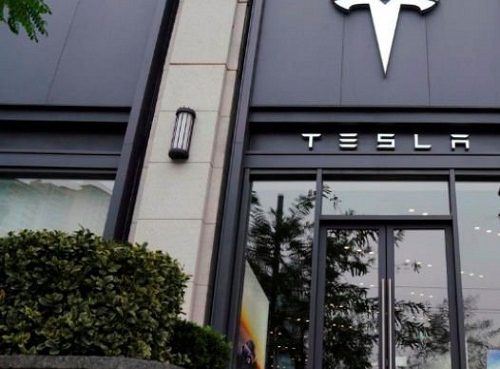2019 was the year of hyper-personalisation, blockchain, as well as data privacy and transparency. What will the new decade bring forth?
A decade has surpassed us and we are in the dawn of starting a new one. The new decade in this age of technology, without a doubt, would be something out of the futuristic movies we saw back in the ’90s. We can proudly say that the future is finally here.
So, without further ado, here are the several tech trend predictions that we have gathered for the year 2020.
Cybersecurity is taking a new level
Cybersecurity’s narrative has always been led by the “fear of breach” more than any other potential facets it has in store. This was largely due to multiple global incidents that we have seen on the news; one being the infamous case of misleading posts to be approved and circulated on Facebook as ads targeted to its billions of users.
According to recently released EY’s The Forrester Wave™: Cybersecurity Consulting Services In Asia Pacific, organisations will keep a close eye on how regulators will respond to those big cyber incidents following the go-live of the General Data Protection Regulation (GDPR). Harsh punishments and penalties will prompt Asia Pacific companies to get an understanding of their GDPR readiness posture.
With 5G is on the horizon for some Asian countries, multi-cloud and IoT adoption is expected to follow suit –and not without security risks. According to Sandeep Bhargava, Managing Director of Asia Pacific/Japan, Rackspace, besides providing a wider potential attack surface for hackers, multi-cloud can also cause organisations to be more vulnerable to insider threats.
“For instance, the increased complexity of the IT environment due to multi-cloud adoption might lead to poor configuration management. Having more business users using the cloud also poses a challenge as not everyone fully understands cloud security risks and knows how to mitigate them,” Bhargava adds.
Rackspace added that to minimise cloud risks, organisations will need to have a multi-layered security strategy that can provide detection, response, and remediation when their IT environment is in jeopardy. Their Chief Information Security Officers (CISOs) will also need to work across more departments in 2020 to ensure that security is not overlooked when innovative solutions and new business processes are introduced.
More people will recognise the value of cryptocurrency
On a related note, Facebook could eventually launch its digital currency Libra in 2020. Watson adds, “I think this has a great historical significance and may even become a landmark of the blockchain industry. Libra has established a relatively positive image for the blockchain industry in the short term.”
Libra has managed to reduce the regulatory pressure on the entire industry to some extent and has also improved the working environment of the blockchain industry.
With Facebook’s large user base in the internet industry, Libra has the potential to bring a large number of new users to the blockchain industry. Libra can also be regarded as a type of stablecoins.
Compared to traditional banks and fiat currencies, blockchain-based stablecoins can make payments faster, cheaper, and smoother, which is also one of the main applications of blockchain. “It shows the recognition of blockchain at the national level, which is positive for the industry, and more people will realise the value of cryptocurrencies,” said Haipo Yang, CoinEx’s CEO, in an interview with LearnBonds.
When it comes to Bitcoin, the concept remains working as before with a rising price. However, Bitcoin’s higher portion of total crypto market capitalisation means that other currencies are lacking attention and their prices are falling, which is the signal of a bear market.
In contrast, the lower the Bitcoin’s portion, the hotter the overall cryptocurrency market. “So in my point of view, the alt season will only come when Bitcoin’s portion begins to drop,” said Yang.
Decentralised peer-to-peer Exchange (DEX) to become more significant
Decentralised peer-to-peer Exchange (DEX) is an exchange run by code that exists as a decentralised application (DApp). It is a place where people can trade cryptocurrencies directly without a middleman.
According to Yang, at present, almost all blockchain exchanges are centralised, which is believed to be the biggest bug in this field. “Blockchains are known for decentralisation, but the entire ecosystem is heavily dependent on centralised exchanges, which is ironic,” Yang added.
DEX is clearly the evolutionary direction of the blockchain exchange, and DEX will reshape the exchange industry through decentralisation.
In DEX, users are in charge of their own private keys. DEX can support the issuance and trading of thousands or even more tokens to meet the needs of future industry development.
“Through decentralised governance and operation, DEX has no single point of failure and takes on more vitality,” said Yang.
5G and its new tech implications
The year 2020 will be the moment for 5G to play and stay.
It is necessary to complement IoT advancements, as Watson points out. “5G itself is an attractive asset for telecom operators to offer with enterprises that have started to invest in the technology.”
“5G will lead to a rapid increase in the number of connected devices and will lower latency, therefore augmenting the capabilities that IoT offers,” Watson adds.
The presence of 5G, simultaneously, will also become solutions in the area of cybersecurity such as using AI for cyber strategy in monitoring regular management of newly introduced technology, as well as assess the cyber-physical risks they could bring. It can also create more resilient technology platforms that have the ability to predict attacks before they occur.
To date, South Korea and China have rolled out 5G networks, while Australia, Japan, and Singapore plans to do so next year, in predictions shared by Rackspace.
5G rollout will be beneficial especially for the manufacturing, retail, transportation, and government sectors, as they adopt IoT to become more connected. 5G’s low-latency, high bandwidth network will enable far-away sensors to instantly share updates about the connected devices, therefore enabling real-time processing.
“This will, in turn, drive the demand for edge computing as data can be immediately processed near where the data is generated, instead of in a centralised data-processing warehouse. Edge computing can also help reduce operational costs. It reduces the bandwidth needs as data is mostly processed locally, and only the relevant data gets transmitted to the central data repository,” says Bhargava.
Another sector that may benefit from the arrival of 5G is video games. Watson also shares that cloud gaming and 5G technology represents an opportunity for the industry as companies can harness these new technologies to edge out competitors to prevent slowing growth.
“There has been an increase in expenditure on boosting cybersecurity compliance, as well as in the tech infrastructure needed to support blockchain is being utilised as a solution to encourage trust throughout the video gaming ecosystem,” says Watson based on the result of a survey conducted by EY.
All-cloud data storage and its management
More businesses will shift their operations to the cloud and deploy data-intensive workloads with higher supercomputing footprint. According to Pure Storage’s predictions, to support these workloads, more renewable forms of data sustainability and emerging techniques will arise to make processing more energy efficient.
However, as applications are developed or re-platformed for cloud-friendly architectures, Object Storage will become the natural choice for enabling applications to decouple and disaggregate applications and their computed resources from a pool of shared storage.
Still from Pure Storage’s predictions, subscription business models will see a spike in the new decade.
In addition to that, fueling the growth for modern analytics will become more affordable infrastructure options such as more powerful CPUs, consumption-based infrastructure, available both on-prem and in the public cloud, and lower-priced flash memory. “The unbridled growth of data sources including smart devices (smart home, wearables, connected cars, industrial internet, etc.) will drive the adoption of modern analytics in order to drive more insights,” said Matthew Oostveen, Chief Technology Officer, Asia Pacific & Japan, Pure Storage.
All in all, multi-cloud will become the preferred IT foundation for more organisations as they seek to become more agile to keep up with the digital disruption.
“For multi-cloud to deliver value, it needs to be integrated, support DevOps, and scale services to meet variable workload demands. Recognising this, some cloud giants have introduced solutions – such as AWS Outpost, Azure Arc, and Google Anthos – that can ensure consistent development and operations experience across on-premise, private and public clouds,” Bhargava adds.
As the competition among cloud hyperscalers to become the provider of choice heats up, the team at Rackspace believes that more of such unified, hybrid/multi-cloud tools will be rolled out next year.
AI-driven everything
Pure Storage also added that AI will go from advisory roles to an automated action as customers want to take the backseat.
“Organisations will be more open to AI making decisions for them,” Oostveen added.
Ronen Mense, President & Managing Director, APAC at AppsFlyer added: “We are finally going to see some solid impact out of Artificial and Augmented Intelligence. It may possibly be first felt in the logistics and supply chain sector, paving the way for a new category called Logitech (not to be confused with the brand).”
Singapore, for example, has geared up with its National AI Strategy, publicly announced during the Singapore Fintech Festival in November.
Deputy Prime Minister Heng Swee Keat shared that the new strategy details how Singapore is set to develop and use AI to transform the economy and improve peoples’ lives.
“The government has committed more than S$500 million (US$368 million) to fund AI activities under the Research, Innovation and Enterprise 2020 (RIE2020) plan,” Heng said.
The launch of the latest national AI strategy targeted at developing the AI ecosystem in Singapore is a part of the nation’s ongoing Smart Nation initiative. Singapore will embark on the plan by kickstarting projects in key high-value sectors and building a holistic AI ecosystem.
The National AI Strategy has three objectives that include Singapore becoming a global hub for developing, test-bedding, deploying, and scaling AI solutions, as well as learning how to govern and manage the impact of AI.
With Singapore as APAC’s corridor pledged to be an “AI-fied” nation, we can only imagine what would entail for the rest of the region in the next decade.
We are going to see more early-stage funding round being announced in the Southeast Asian startup ecosystem, particularly seed funding news.
At least, this is the direction that we began to see towards the end of this year. In the various interviews that e27 has done this year, we have seen investors expressing their interest in focussing on early-stage investments.
The latest of such kind of conversation was this one we had with Vertex Holdings on their new fund; CEO Chua Kee Lock stated that early-stage investing “will remain a robust asset class for the foreseeable future.”
The privacy-led customer journey for Gen Z
There are also other digital spheres that we think may see growth, such as the use of hyper-personalisation technology and the rise of a new era of social media such as TikTok, driven by its vast users, Generation Z.
We need to also factor that the next decade will see Generations Z as the dominant consumers that grow with technology and grown by technology, with them entering multiple stages of their lives, forcing products and services to adjust to their needs.
“With 2019 became a milestone year for data privacy and transparency, many big tech players introduced features that give consumers more control over how and when their data is collected and used. To capitalise on the positive impact this has on consumers, we can expect brands, marketers, and developers to increasingly look beyond their traditional marketing tech stack to inform their 2020 campaigns and business objectives with anonymised data throughout the customer journey,” Mense adds.
Besides Gen Z leading the way, mobile gaming is another big disruptor this year that is predicted to continue to gain massive popularity for the coming years. In the State of Gaming App Marketing 2019 report released by AppsFlyer, it is stated that hyper-casual will make way for hybrid-casual mobile games, as players demand better quality and deeper gameplay, which means fewer ads and players are willing to pay for the experience.
The report also shared the potential of India as the next big frontier. It already has the building blocks such as a massive young population; smartphone penetration expected to reach 32 per cent in 2020; cheapest, accessible mobile data; and with more than 200 homegrown world-class gaming studios making India their home.
Besides the seven tech trend predictions mentioned, AppsFlyer also added that the new decade will thwart fintech to a whole other level, with it continues to disrupt the banking system.
“Traditional institutions will be scrambling if they aren’t already. Those who don’t keep up will be left behind in the new decade,” Mense adds.
Source: e27










